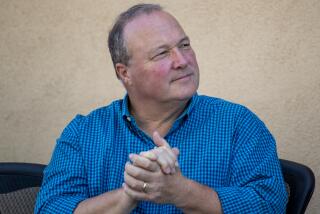Philip Seymour Hoffman’s death calls attention to rise in heroin use
NEW YORK — The death of Oscar-winning actor Philip Seymour Hoffman underscores a surge in heroin use reminiscent of the 1970s and early ‘80s.
More than 660,000 Americans used heroin in 2012, health officials say — nearly double the number from five years earlier — and users tend to be more affluent than before, living in the suburbs and rural areas rather than the inner city.
“It’s reached epidemic proportions here in the United States,” said Rusty Payne, a Washington, D.C.-based spokesman for the Drug Enforcement Administration.
Mexican cartels are pushing ever-larger amounts of heroin across the Southwestern border, sometimes hidden in fake coconuts, bananas and lollipops, officials said.
Heroin has flooded the Northeast and reached a large market of American pain-pill addicts seeking a less-expensive high. Overdoses and emergency room visits have skyrocketed across the country, officials say, and more are dying from a drug whose purity can be hard to judge.
Los Angeles traditionally was the final destination for Mexico’s trade, but in recent years that distribution has spread across the United States, said Sarah Pullen, a special agent in the DEA’s Los Angeles office.
PHOTOS: Notable deaths of 2014
“Increasingly, heroin addicts are former prescription drug abusers,” Pullen said. “They become hooked on painkillers and move over to heroin because it is available for far cheaper.”
Heroin users in L.A. can get a hit for as little as $8 to $10, officials say, so they can get high several times for what they would pay for a single, pricier pain pill.
The consequences have been increasingly lethal. In 2010 — the latest year such data were available — heroin overdoses killed more than 3,000 people across the U.S., a 45% increase since 2006, according to the DEA.
Hoffman’s death at age 46 comes a week after Pennsylvania officials announced that a batch of heroin spiked with fentanyl had killed at least 22 people in January.
Spiked heroin also has killed at least 37 people in Maryland since September, chief medical examiner Dr. David Fowler said.
Although initial autopsy results on Hoffman are pending, the scene from the actor’s New York apartment offered a sad tableaux probably familiar to emergency responders.
Hoffman was found dead with a needle in his arm. In his apartment were dozens of glassine packets, some containing powder, law enforcement officials said. Some packets were stamped Ace of Spades, marking them as a brand of heroin. Hoffman had battled addiction for years.
“Glee” star Cory Monteith, 31, also struggled with drugs. He died in a British Columbia hotel room in July after taking a combination of heroin, alcohol, morphine and codeine.
Heroin was a drug of choice for celebrities and inner-city addicts alike in the 1970s, often with fatal consequences. But its popularity declined in the 1980s as the HIV/AIDS crisis brought worries of infection-carrying needles. Crack cocaine supplanted heroin as a cheap, powerful option for poorer users.
Now, experts say, heroin is back. Americans’ widespread abuse of prescription drugs has created a new market for the opiate, which gives users a powerful euphoria similar to that of pain pills.
“This last year, we’ve seen a big uptick in heroin use. It’s become rapidly very popular,” said Theodore J. Cicero, a professor of neuropharmacology at Washington University in St. Louis, who has been studying national drug treatment rates for seven years. “But now it’s becoming a rural and suburban issue rather than an urban issue.”
Most states had an increase in heroin patients from 2000 to 2010, according to federal statistics. The drug was particularly accessible in the Northeast, where officials say New York City serves as the transit point for heroin coming via road from the Southwest, via air from overseas and via ship from South America.
In New York, one oxycodone pill on the street costs about $30 and is good for just one hit. (Oxycodone is an ingredient derived from opium; in pill form, it’s marketed as OxyContin.) For about the same price, buyers can get six glassines of heroin, according to Erin Mulvey, another DEA spokeswoman in New York.
“Six hits and six highs, versus one high for oxycodone,” Mulvey said.
The DEA’s Payne added: “Who would have ever thought in this country it would be cheaper to buy heroin than pills and obtain them more easily? That is the reality we’re facing.”
Heroin has such a grip on the Northeast that Vermont’s governor dedicated his State of the State address to fighting the drug. The state saw a 250% increase in patients receiving treatment for heroin use since 2000.
“What started as an OxyContin and prescription drug addiction problem in Vermont has now grown into a full-blown heroin crisis,” Vermont Gov. Peter Shumlin said in January. The greatest heroin treatment increase came in the last year, he said.
In the Vermont town of St. Albans, population 6,894, Fred Holmes was treating about 80 teenage opiate addicts in his pediatric practice when he retired last year. Many of the teenagers had started out as OxyContin addicts before the drug got too expensive, which is when they switched to heroin, he said.
“There’s no socioeconomic discrimination in the world of addiction,” Holmes said. “Doesn’t matter if your father’s an attorney and you have a house on the hill.”
That message resonates with Aram Homampour, 46, who abused alcohol, Xanax and cocaine before he started smoking heroin. His addiction took him to rock bottom when he was about 34, he said.
“Bottom line, it presents your consciousness with another reality that at times is so amazing that if you have the power to visit it every day without destroying your life, you would,” said Homampour, who has been clean for nine years and is the chief operating officer of the Malibu Beach Recovery Center. “By the time that you figure out it does destroy your life, you’ve lost the power of choice.”
Grieving parents have lost more than choice.
Bob Lutz, 73, a retired police officer from St. Francis, Wis., is one of them. His daughter, Cassandra, 26, died of an overdose after attending a concert in March, and an acquaintance has been charged with injecting her with heroin.
“Her life has got to mean something, and all of these people who are doing this heroin stuff, they’re not going to quit unless somebody someplace along the line puts a penalty on it big enough that they’re going to stop,” Lutz said. “And until they do that, it’s going to get worse, and worse, and worse. It’s as simple as that.”
Pearce reported from Los Angeles and Susman from New York. Times staff writers Richard Winton, Lisa Girion and Scott Glover in Los Angeles contributed to this report.
More to Read
Sign up for Essential California
The most important California stories and recommendations in your inbox every morning.
You may occasionally receive promotional content from the Los Angeles Times.












